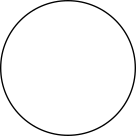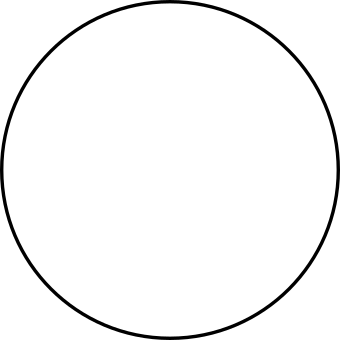

| Time of discovery of asteroids which came closer to Earth than the moon in 2019 | ||
| ||
List of asteroid close approaches to Earth in 2012 is a listing of asteroids noted for their close approach to planet Earth
A list of known near-Earth asteroid close approaches less than 1 lunar distance (384,400 km or 0.00256 AU) from Earth in 2012.[note 1]
Rows highlighted red indicate objects which were not discovered until after closest approach
Rows highlighted yellow indicate objects discovered less than 24 hours before closest approach
Rows highlighted green indicate objects discovered more than one week before closest approach
Rows highlighted turquoise indicate objects discovered more than 7 weeks before closest approach
Rows highlighted blue indicate objects discovered more than one year before closest approach (i.e.
objects successfully cataloged on a previous orbit, rather than being detected during final approach)
This list does not include any of the objects that collided with earth in 2012, none of which were discovered in advance, but were recorded by sensors designed to detect detonation of nuclear devices.
| Date of closest approach |
Date discovered |
Object | Nominal geocentric distance (AU)[note 2] |
Size (m) (approximate) |
(H) (abs. mag) |
Closer approach toMoon |
Refs[1][2] |
|---|---|---|---|---|---|---|---|
| 2012-01-02 | 2011-12-31 | 2011 YB63 | 0.00156 AU (233,000 km; 145,000 mi) | 6 | 29.8[3] | data · 2011 YB63 | |
| 2012-01-20 | 2012-01-18 | 2012 BV1 | 0.00212 AU (317,000 km; 197,000 mi) | 3 | 31.0[4] | Yes | data · 2012 BV1 |
| 2012-01-27 | 2012-01-25 | 2012 BX34 | 0.000437 AU (65,400 km; 40,600 mi) | 17 | 27.6[5] | data · 2012 BX34 | |
| 2012-02-20 | 2012-02-22 | 2012 DY13 | 0.00073 AU (109,000 km; 68,000 mi) | 15 | 27.9[6] | data · 2012 DY13 | |
| 2012-03-01 | 2012-03-02 | 2012 EZ1 | 0.00154 AU (230,000 km; 143,000 mi) | 10 | 28.8[7] | data · 2012 EZ1 | |
| 2012-03-26 | 2012-03-24 | 2012 FP35 | 0.00107 AU (160,000 km; 99,000 mi) | 15 | 27.9[8] | data · 2012 FP35 | |
| 2012-03-26 | 2012-03-25 | 2012 FS35 | 0.000430 AU (64,300 km; 40,000 mi) | 5 | 30.2[9] | data · 2012 FS35 | |
| 2012-04-01 | 2012-03-13 | 2012 EG5 | 0.001539 AU (230,200 km; 143,100 mi) | 60 | 24.3[10] | data · 2012 EG5 | |
| 2012-04-19 | 2012-04-21 | 2012 HM13 | 0.00187 AU (280,000 km; 174,000 mi) | 14 | 28.1[11] | data · 2012 HM13 | |
| 2012-05-13 | 2012-05-12 | 2012 JU | 0.00135 AU (202,000 km; 125,000 mi) | 13 | 28.3[12] | data · 2012 JU | |
| 2012-05-17 | 2012-05-16 | 2012 KA | 0.00149 AU (223,000 km; 139,000 mi) | 11 | 28.6[13] | data · 2012 KA | |
| 2012-05-19 | 2010-05-23 | 2010 KK37 | 0.00111 AU (166,000 km; 103,000 mi) | 19–43 | 25.7 | data · 2010 KK37 | |
| 2012-05-28 | 2012-05-23 | 2012 KP24 | 0.00038 AU (57,000 km; 35,000 mi) | 20 | 26.4[14] | data · 2012 KP24 | |
| 2012-05-29 | 2012-05-28 | 2012 KT42 | 0.000139 AU (20,800 km; 12,900 mi) | 9 | 29.0[15] | data · 2012 KT42 | |
| 2012-06-21 | 2012-06-23 | 2012 MF7 | 0.00211 AU (316,000 km; 196,000 mi) | 24 | 26.9[16] | Yes | data · 2012 MF7 |
| 2012-10-07 | 2012-10-05 | 2012 TV | 0.00170 AU (254,000 km; 158,000 mi) | 50 | 25.2[17] | data · 2012 TV | |
| 2012-10-09 | 2012-10-10 | 2012 TM79 | 0.00061 AU (91,000 km; 57,000 mi) | 28 | 26.6[18] | data · 2012 TM79 | |
| 2012-10-12 | 2012-10-04 | 2012 TC4 | 0.000634 AU (94,800 km; 58,900 mi) | 27 | 26.7[18] | data · 2012 TC4 | |
| 2012-11-12 | 2012-11-14 | 2012 VH77 | 0.00133 AU (199,000 km; 124,000 mi) | 20 | 27.3[19] | data · 2012 VH77 | |
| 2012-11-14 | 2012-11-12 | 2012 VJ38 | 0.00151 AU (226,000 km; 140,000 mi) | 11 | 28.5[20] | data · 2012 VJ38 | |
| 2012-12-11 | 2012-12-09 | 2012 XE54 | 0.00150 AU (224,000 km; 139,000 mi) | 50 | 25.4[21] | data · 2012 XE54 | |
| 2012-12-14 | 2012-12-11 | 2012 XB112 | 0.00211 AU (316,000 km; 196,000 mi) | 6 | 29.9[22] | data · 2012 XB112 | |
| 2012-12-15 | 2012-12-13 | 2012 XL134 | 0.00184 AU (275,000 km; 171,000 mi) | 16 | 27.8[23] | data · 2012 XL134 |
This sub-section visualises the warning times of the close approaches listed in the above table, depending on the size of the asteroid. The sizes of the charts show the relative sizes of the asteroids to scale. For comparison, the approximate size of a person is also shown. This is based the absolute magnitude of each asteroid, an approximate measure of size based on brightness.
Abs Magnitude 30 and greater

(size of a person for comparison)

Abs Magnitude 29-30

Absolute Magnitude 28-29

Absolute Magnitude 27-28

Absolute Magnitude 26-27

Absolute Magnitude 25-26

Absolute Magnitude less than 25 (largest)

|
2012 in space
| ||
|---|---|---|
2013 » | ||
| Space probe launches |
| |
| Impact events |
| |
| Selected NEOs |
| |
| Exoplanets |
| |
| Discoveries |
| |
| Comets |
| |
| Space exploration |
| |
| ||